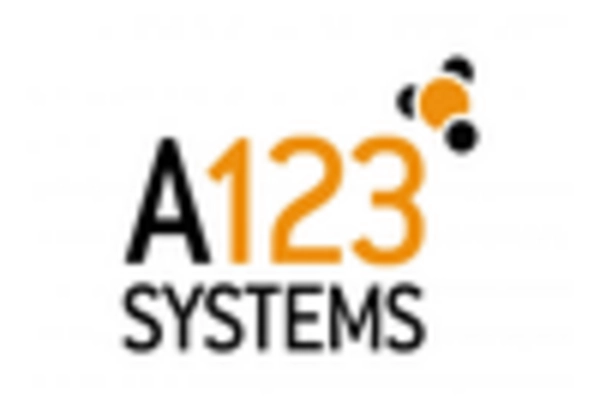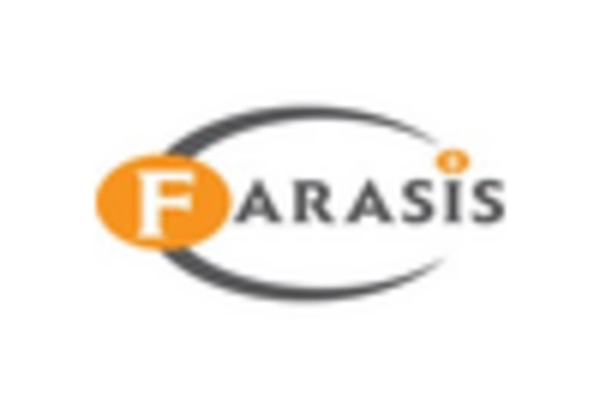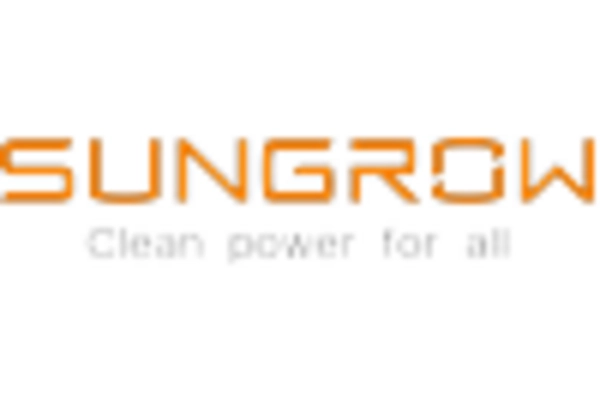Environmental Sustainability
The Potassium Ion Battery Market is increasingly aligned with environmental sustainability goals. Potassium ion batteries are perceived as a more eco-friendly alternative to lithium-ion batteries, primarily due to the abundance of potassium and the reduced environmental impact associated with its extraction and processing. As industries and consumers alike prioritize sustainable practices, the demand for potassium ion batteries is likely to rise. This shift towards greener technologies may not only enhance the reputation of companies involved in the Potassium Ion Battery Market but also attract investments focused on sustainable energy solutions, further driving market growth.
Supportive Regulatory Frameworks
The Potassium Ion Battery Market is likely to gain momentum from supportive regulatory frameworks aimed at promoting clean energy technologies. Governments are increasingly implementing policies that encourage the development and adoption of alternative battery technologies, including potassium ion batteries. These regulations may include incentives for research and development, as well as subsidies for manufacturers. As a result, the Potassium Ion Battery Market could see enhanced growth opportunities, as companies align their strategies with regulatory expectations. This supportive environment may foster innovation and collaboration, ultimately leading to a more robust market presence for potassium ion batteries.
Growing Demand for Renewable Energy Storage
The Potassium Ion Battery Market is poised to benefit from the increasing demand for renewable energy storage solutions. As the world transitions towards renewable energy sources, the need for efficient and reliable energy storage systems becomes paramount. Potassium ion batteries, with their potential for high capacity and long cycle life, may serve as a viable option for storing energy generated from solar and wind sources. This growing trend could drive investments and innovations within the Potassium Ion Battery Market, as stakeholders seek to develop solutions that meet the energy storage needs of a sustainable future.
Technological Innovations in Energy Storage
Technological advancements are playing a pivotal role in the Potassium Ion Battery Market. Innovations in battery chemistry and design are enhancing the performance and efficiency of potassium ion batteries. Research indicates that these batteries can achieve comparable energy densities to lithium-ion batteries, which could revolutionize energy storage applications. As new technologies emerge, the Potassium Ion Battery Market is likely to benefit from increased adoption across various sectors, including electric vehicles and renewable energy storage. The continuous evolution of battery technology may also lead to improved safety and longevity, further solidifying the position of potassium ion batteries in the market.
Cost-Effectiveness of Potassium Ion Batteries
The Potassium Ion Battery Market is witnessing a growing interest due to the cost-effectiveness of potassium as a raw material. Potassium is more abundant and less expensive than lithium, which has traditionally dominated the battery market. This economic advantage could lead to lower production costs, making potassium ion batteries an attractive alternative for manufacturers. As the demand for affordable energy storage solutions increases, the Potassium Ion Battery Market may experience significant growth. Furthermore, the potential for reduced costs in large-scale production could enhance the competitive positioning of potassium ion batteries against other technologies, thereby expanding their market share.

















Leave a Comment